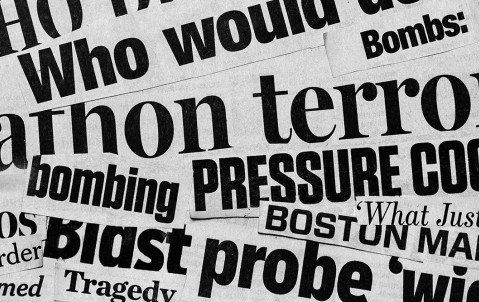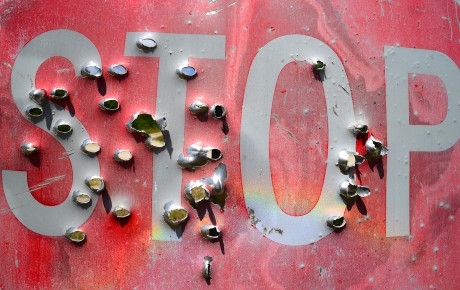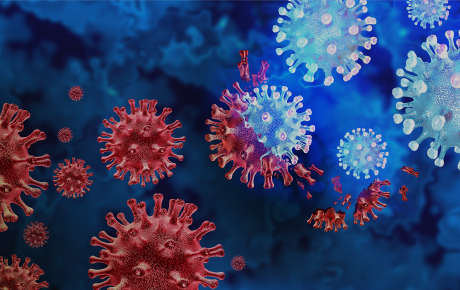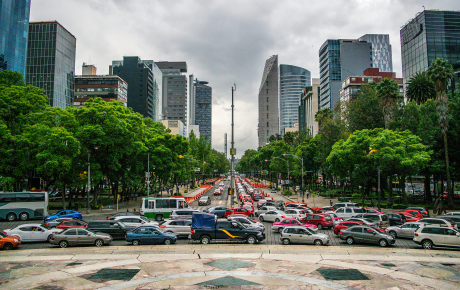
How to catch a terrorist
We hear from the FBI Special Agent who hunted down the Boston Marathon bombers.
As runners got to the finish line of the Boston Marathon on the 15 April, 2013, two homemade pressure cooker bombs went off within seconds of each other, spraying pellets and nails, killing three people and injuring hundreds of others.
At the time of the attack, the FBI’s Special Agent in Charge of the Boston Division – Richard DesLauriers – was listening to a presentation by a law professor from Boston College. “My assistant’s Blackberry went off and it simply said, ‘two large explosions near the finish line of the Boston Marathon’,” said DesLauriers. “That’s the first moment I knew there might be something wrong, so I excused myself from the presentation, went down to my office and took a call from Boston’s Police Commissioner informing me that there were large scale casualties and asking for help.”
The explosion was the first act of an almost week-long drama and manhunt culminating in a shootout, the death of a policeman and one of the bombers, before the surviving terrorist was finally caught on the 19 April. For Boston and the US more widely, it was a stark reminder of the potential disruption and devastation that homegrown violent extremists (HVEs) can inflict on large metropolitan areas.
Bringing order to chaos
Having despatched all his available resources ranging from bomb and evidence technicians, to a SWAT team, DesLauriers explained what his priority is in such a fluid, and dynamic situation. “In the first minutes and hours after an incident like this, you’re trying to bring order to chaos; organise the facts, understand what the scope of the incident is, and then make the best investigative decisions possible.”
For Boston and the US more widely, it was a stark reminder of the potential disruption and devastation that homegrown violent extremists (HVEs) can inflict on large metropolitan areas.
Adding to the uncertainty was the difficulty in quickly identifying and finding the Tsarnaev brothers – the terrorists responsible for the bombing – which made the threat harder to neutralise says DesLauriers. “The Tsarnaevs were not associated with a terrorist organisation. That’s what makes chasing down HVEs and trying to prevent them from carrying out an attack a lot more difficult than detecting someone who has come in from overseas. All the Tsarnaev brothers needed to do to become radicalised was to have an internet connection.”
In the US, the HVE threat appears to have grown in recent years. According to the US Office of Homeland Security and Preparedness, there were 13 attacks and plots nationwide in 2017 relating to HVEs with ‘22 individuals …charged with material support or other related offenses nationwide’.
Area impact
With HVE attacks likely to continue, in addition to the potential for immediate loss of life and security implications, it’s often the wider fallout that can be difficult for businesses in the area. “After the fire fight on the Thursday evening with the Tsarnaevs, and prior to capturing Dzhokhar Tsarnaev 24 hours later, the entire metropolitan area of Boston was shut down – a district of around 5 million people and tens of thousands of businesses. It had an enormous impact on any business that operated in that vicinity,” said DesLauriers, who recalled being summoned by [Massachusetts’] Governor Deval Patrick to advise on whether that night’s scheduled Boston Bruins hockey match and a Boston Red Sox baseball game should go ahead. “There is a huge economic impact in shutting down these two big sporting events but I told Governor Patrick that these individuals are still on the loose and my recommendation is to cancel both games.” Advice which the governor acted upon.
All the Tsarnaev brothers needed to do to become radicalised was to have an internet connection.
This level of disruption is something businesses are increasingly concerned about when there is a terrorist event added Hiscox’s Richard Halstead – Line Underwriter for War, Terrorism and Political Violence. “You have the main terrorist incident and you then have almost concentric circles moving out; each with graded levels of disruption. For those businesses in the immediate scene there could be physical damage and business interruption; but for those people a few hundred metres away, they might have suffered no direct impact but they could be in an area that’s cordoned off for some time. And there can be a city-wide impact on businesses in terms of the disinclination for people to travel and go into an area that they perceive to be at threat.”
Prepare for the unexpected
“It’s why it is important,” said DesLauriers, “for businesses to prepare for the unexpected. No one expected bombs to go off that day in Boston. Having a contingency plan for how your business will react to such a disruptive event is critical; know how to account for your employees and make sure they are safe; and, for major business entities, have good law enforcement liaison relationships so you know who to contact at 2am if something goes wrong.”
You have the main terrorist incident and you then have almost concentric circles moving out; each with graded levels of disruption.
“For insured clients,” added Halstead, “we operate a 24-hour hotline that clients can use as soon as something happens to get support – whether it’s help with additional security, counselling for employees or public relations support. Obviously in a situation like Boston, the emergency services will manage the situation for a lot longer, but we’ve certainly seen in some smaller situations – where the emergency services have stepped back relatively quickly – that for businesses in the area, it can be the most dramatic and catastrophic event they have ever faced.”




